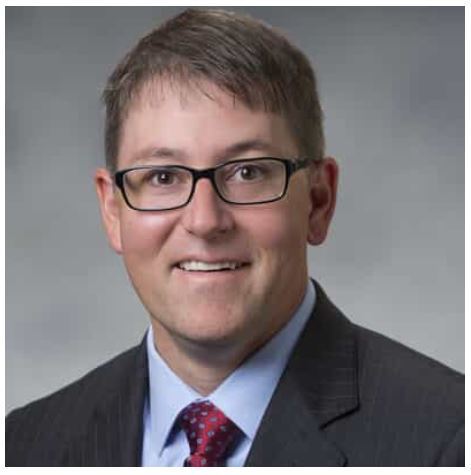|
Recruiting and retaining primary care physicians in rural medicine is one of the critical issues our office focuses on. Minnesota has an increasing need to address the widespread shortage of primary care physicians in rural areas. To meet this critical need, MDH provides support to medical students and residents, including those individuals who are on “non-traditional” career paths and who are willing to work in shortage areas, through a number of grants and programs.

Medical professionals increasingly take diverse routes to get to and through medical school. One example is Dr. Eric Tolga Hanhan. For 12 years, Dr. Hanhan had been a middle school educator teaching science in Floodwood, MN, and Superior, WI, when he decided to take the plunge and go back to medical school. Becoming a primary care doctor requires an enormous educational and financial commitment, and for adults considering pursuing medicine as a second career, the physical, psychological and financial costs can feel even more substantial. However, it can be done and the Office of Rural Health and Primary Care helps by administering programs to support students and educational organizations who are willing to serve underserved areas of the state.
The more incentives and support that can be offered to medical students and residents—especially those who will practice in rural areas—the better it is for Minnesota.
 Dr. Hanhan’s decision to make a career change began with getting the full support of his wife and kids. Embarking on 7+ years of medical school is an undertaking that involves everyone’s understanding and commitment. “I made the change with their full-on support,” Hanhan said, “and that made a huge difference. We were all in it together.” Dr. Hanhan’s decision to make a career change began with getting the full support of his wife and kids. Embarking on 7+ years of medical school is an undertaking that involves everyone’s understanding and commitment. “I made the change with their full-on support,” Hanhan said, “and that made a huge difference. We were all in it together.”
The next step was to get admitted to medical school. Having already received a bachelor’s degree in biology and a master’s degree in Teaching Secondary Science, Hanhan didn’t have to take more than a couple of undergraduate classes—e.g., biochemistry— to be considered “pre-med.” While still teaching, Hanhan studied for the Medical College Admission Test® (MCAT®) and volunteered in health clinics during the summers for some hands-on experience dealing with patients.
With his wife and two kids already working and going to school in the Duluth area, Hanhan applied to the University of Minnesota Medical School-Duluth which is a program well-known for focusing on recruiting students who will become rural family physicians. He was accepted.
There are any number of articles and blogs discussing some of the benefits of starting medical school later on in life.1 They point to real life experience, maturity, and knowing how to work more efficiently.
When I was younger, I wasn’t as good a student. As an adult, I stuck to self-imposed rules like studying between 5 and 8 p.m., never past 10. I was much more disciplined because I had other responsibilities, too. (Hanhan)
The University of Minnesota Medical School-Duluth's focus on family medicine turned out to be a great fit for Hanhan. He said he became a primary care physician because one gets to support people through so many transitions: “from babyhood to the end-of-life years”. Hanhan says:
I think in terms of "family medicine." Primary care opens me up to everything and I can provide a wide variety of care to a wide variety of people. Plus, I can support people and families throughout their lives. I like that connection.
 It is important to promote the benefits of practicing in rural areas early on to attract future primary care physicians to work and live in Greater Minnesota. It has been noted that those medical students who come from rural areas are already attuned to living and working in a rural setting.2 Hanhan had taught for four years in Floodwood, MN, and eight years in Superior, WI, where his wife also taught. His children were attending local schools, and the whole family was very much rooted in the Twin Ports area. “Once families get settled somewhere for a couple of years and find out they like a place, they stay. The smaller the community is, the more connected you can become,” said Hanhan. It is important to promote the benefits of practicing in rural areas early on to attract future primary care physicians to work and live in Greater Minnesota. It has been noted that those medical students who come from rural areas are already attuned to living and working in a rural setting.2 Hanhan had taught for four years in Floodwood, MN, and eight years in Superior, WI, where his wife also taught. His children were attending local schools, and the whole family was very much rooted in the Twin Ports area. “Once families get settled somewhere for a couple of years and find out they like a place, they stay. The smaller the community is, the more connected you can become,” said Hanhan.
It was no surprise then that, after his first two years of medical studies, Hanhan applied to the University of Minnesota’s Rural Physician’s Associate Program (RPAP). In this program, medical students live and train in rural communities across Minnesota and western Wisconsin, and experience hands-on learning for nine months through community-based education.3 Hanhan was accepted to the program and was sent to Cloquet, just a half an hour away from his family. “That nine months was a great experience and it confirmed how much I really liked rural medicine.”
Finally, after 4 years of medical school, Hanhan and his family waited to see where they would be placed for his years of medical residency. They were thrilled to find out that he was accepted at the Duluth Family Medicine Residency Program, a training program that has received state funds from the MERC program that is administered through the Office of Rural Health and Primary Care. Almost 400 family physicians have graduated from the Duluth program since 1975. The majority went off to practice in MN and WI in towns with populations less than 25,000. The program was a good fit for Hanhan. During rotations, he spent one month at the Lake View Medical Clinic in Two Harbors, and really enjoyed the practice and their staff.4 After residency, he was very happy to accept a position there.
We asked Dr. Hanhan how it has been for him working in Two Harbors, and without hesitation he said:
Working in Two Harbors has been very rewarding. It has allowed me to have a broad scope of practice; and it has expanded my opportunities such as becoming the medical director of Lake County Jail (I first experienced medicine in the prison system as an RPAP student in medical school), and becoming the medical director for the Lake County Ambulance Service.
We then asked Dr. Hanhan what he would tell other adults thinking of making a career change to medicine and his response was enthusiastic:
It’s never too late! I credit my family for support, so make sure you discuss this with them first!
1 https://www.princetonreview.com/med-school-advice/6-reasons-why-its-not-too-late-to-become-a-doctor
2 https://www.aafp.org/about/policies/all/rural-practice-keeping-physicians.html
3 Each RPAP student receives $16,000 for participation in RPAP - that equals almost half of their tuition for their third year. The community site also pays the student a stipend of $4,000 OR provides free housing. The stipend is paid directly to the student. These payments are made as long as students are meeting RPAP program requirements. RPAP Frequently Asked Questions.
4 The Lake View Medical Clinic in Two Harbors has also been the recipient of MERC funding.
ORHPC programs supporting medical schools and training programs
Health care training and residency programs have high costs attached, both for the student and for the schools that train and support them. The following are programs that MDH has to support medical teaching and training institutions, including the MERC program that supported Dr. Hanhan’s training.
ORHPC programs supporting health care professionals practicing in rural areas
The Minnesota Department of Health also has a number of programs that are meant to support health care professionals who choose to work in rural areas.
|